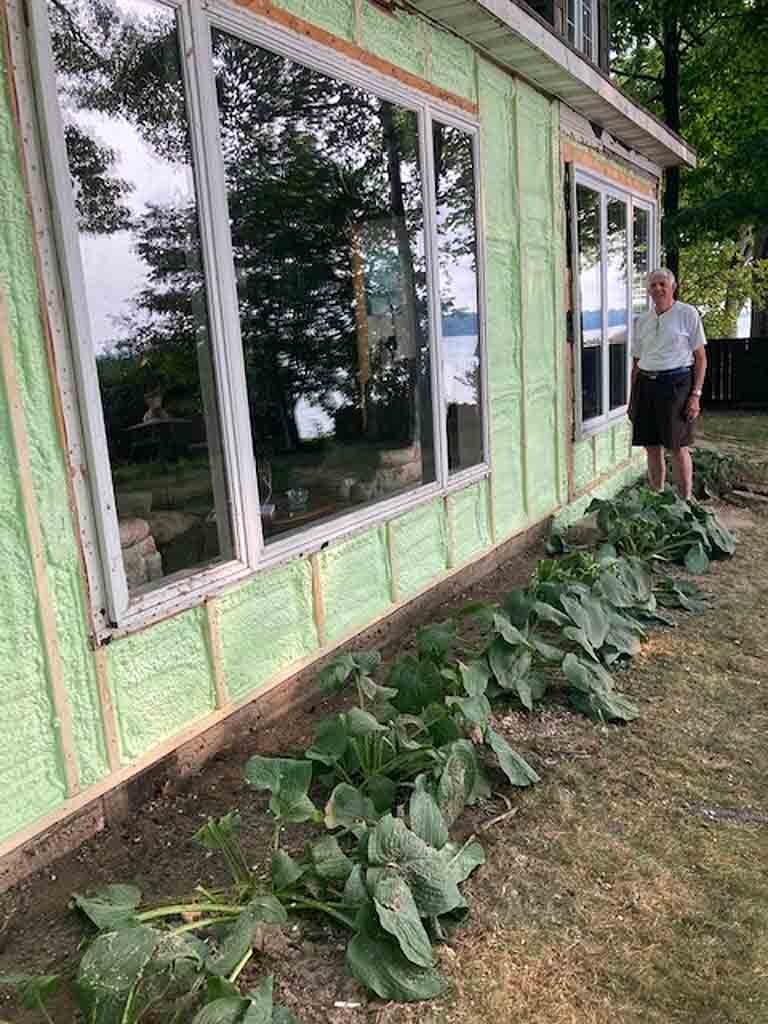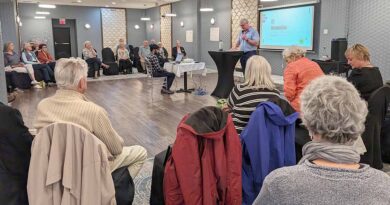Getting Started Retrofitting Your Home
By Mike Jones – Special to SUNonline/Orillia
Building construction is responsible for a massive 40% of the world’s greenhouse gas emissions.
Given that about 80% of the 40% of the emissions come from buildings in use, Orillia homeowners can make a big difference toward sustainability and mitigating climate warming by retrofitting their homes to reduce such emissions.
Retrofitting saves energy and energy costs In addition to reducing emissions. Done properly, it can also result in healthier homes and increased home comfort—not to mention the value added to the property because of the improvements.
How do these retrofits work? Basically, by reducing the heat loss from your house in the winter, and reducing the heat gain in the summer. In other words, using less energy to warm your house in the winter and cool it in the summer.
The measure of such gains and losses is something called an R-value. The measure of the amount of heat lost through a wall, roof or window, ranges from R1 (a great amount of heat lost) to R100 (no heat loss). A single pane of glass has roughly an R value of 1 which is not good. Single pane windows mean windows to develop frost and condensation, which means lots of money in heating bills. Double-glazing with two panes of glass can have an R-value of 2+ which does not seem a lot more, but decreases heat loss by 50%, which is obviously significant. Two panes of glass also eliminate frost and condensation.

One can also achieve good R-values in an existing home using modern foam insulation which has an R-value of about 7.3 per inch. For example, when applied between 2X4 studs, insulation can provide a wall with R-25, and, as a bonus a built-in vapour barrier. In addition, the process adds a good measure of structural stability to the overall construction.
Upgrading insulation, double-glazing (or even triple-glazing) windows, and ensuring tight vapour barriers and seals around doors results in increased R-values – less heat loss in the winter and a cooler home in the summer.
What else can be done? The installation of modern heating units such as air-to-air heat exchangers for warmth and cooling. An air-to-air heat exchanger works on the same principle as your kitchen refrigerator; the fridge cools the air inside the appliance by extracting the heat from inside and expelling it to the outside of the fridge. In a heat exchanger, this process can be, and is, reversed, extracting heat from outdoors to warm the house in winter and reverses the process to cool your home in summer.
Phasing out and replacing old, inefficient appliances and light fixtures benefits the homeowner by reducing energy demand and costs and provides a healthier home environment.
There are financial incentives for home-owners and renters:
- The Save On Energy Energy Affordability Program of the Independent Electricity System Operator of Ontario (IESO) , a non-profit organization created by the Ontario Government in 1998, provides support to income-eligible electricity consumers by helping them lower their monthly electricity costs while increasing their home comfort. Some home-owners or renters may qualify for a free home energy needs assessment conducted by a trained energy professional which will help identify energy efficient upgrades available for their homes. These upgrades may be installed during or after an in-home visit.
- Other participants may qualify instead for free energy-saving kits. These are customized to meet their energy needs and could include energy-saving LED lighting, timers, faucet aerators and/or a clothes drying line.
- All expert advice and energy-saving home upgrades under this program are completely free of charge. For more information, call 1-855-591-0877 or email eap@saveonenergy.ca
- Enbridge Gas customers can get money to improve their home’s energy efficiency. Their Home Efficiency Rebate provides up to $5,000 for insulation, air sealing, new windows/doors, water heaters, boilers, furnaces and home energy assessments. Before starting any renovation work, a home energy assessment is required. A registered energy advisor will look at how your home uses energy and tell you which upgrades will help you save – and how they work together. If you complete at least two of the recommended upgrades, you’ll get money back. Qualifying applicants can even get a rebate to offset the cost of the initial energy audit.
Incentives are also available for small businesses, multi-residential and industrial buildings. Businesses can qualify for either of two programs, Save On Energy’s Retrofit Program or its Energy Performance Program. The updated 2021 Save On Energy Retrofit Program is focussed on helping businesses save on energy costs and increase competitiveness by offering an expanded list of predefined energy-saving measures, faster application review processing, and quicker incentive payments. New incentive measures are available under three streams of equipment: lighting, HVAC, and manufacturing and other equipment. These incentivized measures focus on the most commonly used products and technologies. Please see the complete list of measures and incentives on the website, and visit the Contact us page to get in touch with a Save on Energy Representative.
(Photos and Images Supplied)




